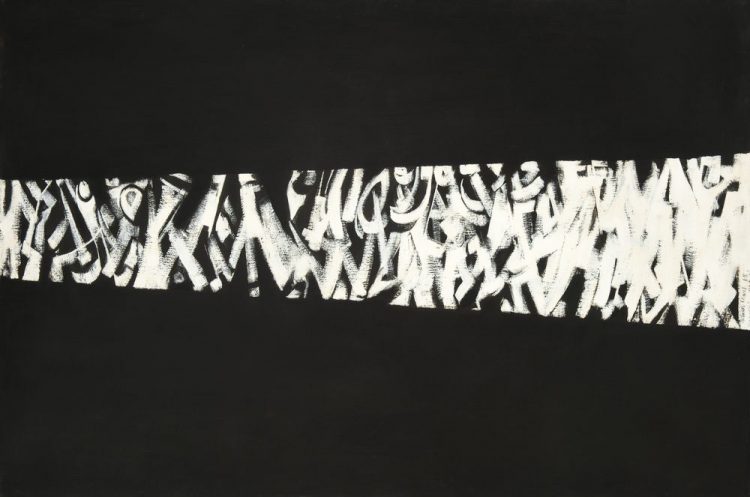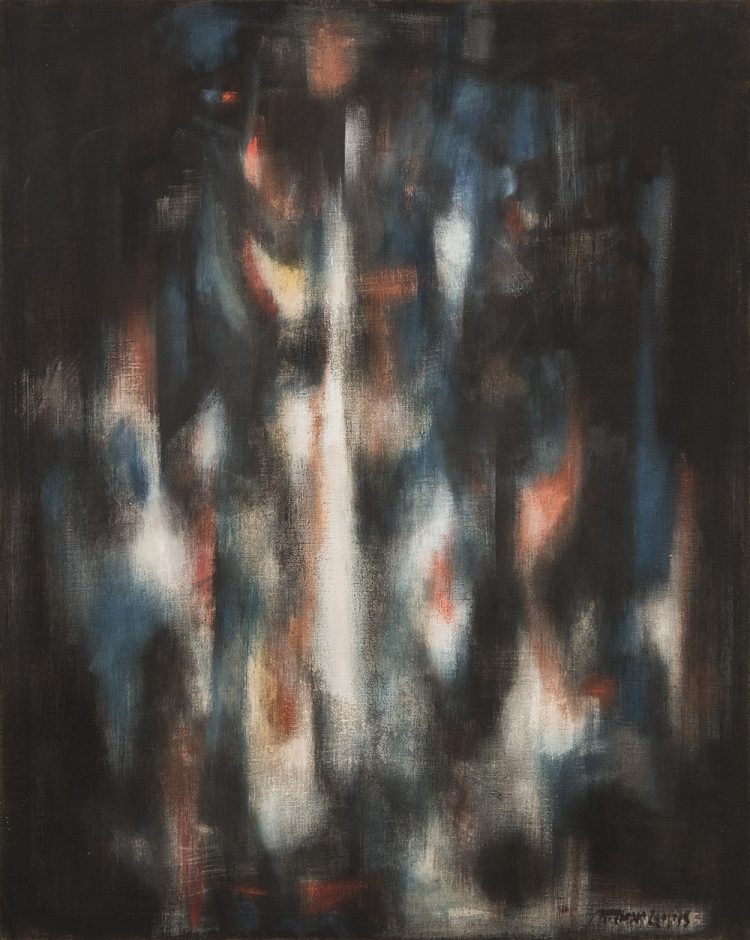Eliza Lafferty, an intern with the Major Gifts and Director’s Office, discusses the abstract works of Norman Lewis, an artist featured in Riffs and Relations: African American Artists and the European Modernist Tradition, on view at The Phillips Collection through January 3, 2021. This post is based on a seminar paper with Professor Elizabeth Prelinger at Georgetown University and was awarded the Misty Dailey Award in Art, Diversity, and Healing.
Norman Lewis (1909-1979) is one of the few African American artists who sustained a career in abstraction. Riffs and Relations features Lewis and creates space to integrate the work of African American artists into the Western canon. Lewis’s abstract works—which are forms of Black activism—must be absorbed into public memory surrounding his greater contributions to the style.
Riffs and Relations curator Dr. Adrienne L. Childs remarks how Lewis “was not absorbed into it [Abstract Expressionism] in terms of the history of the movement.” Riffs and Relations is in conversation with curator Dr. Ruth Fine’s Procession: The Art of Norman Lewis at the Pennsylvania Academy of the Fine Arts in 2015, which uniquely highlighted Lewis’s abstract works. Dr. Childs recognizes that the Lewis exhibit “was a way of beginning to rectify the absences in the record.”[1] Procession noted Lewis’s activism, particularly as the founding president of the Spiral group of African American artists during the Civil Rights movement. Lewis used abstraction to chronicle significant moments and people in the fight for Black empowerment.

Norman Lewis, Processional, 1964, Oil on canvas, private collection
Featured in Dr. Fine’s Procession and also in a Spiral collective show, where all the work had to be in black and white, is Lewis’s Processional from 1964. Its interlocking shapes echo the “improvisational brilliance in undulating cadences, despite the twisting effects of the fight for human rights.”[2] With a black background, the vertical and diagonal brush strokes relay a sense of dynamism and movement. Lewis forms what appears to be a crowd of people moving forward. Stepping closer and examining the corners of the composition, viewers may seek to connect forms: a circle as the illusion of a head, the line as a body form, the sharp rectangles as protest signs. The shape appears to be moving forward—although it is not achieved without struggle among the crowd. As evidenced by Processional, Lewis’s work leverages abstraction as a means to elevate the struggle for civil rights.
Riffs and Relations exhibits Lewis’s Landscape (Land Echoes) from 1955. Landscape, created prior to Spiral’s founding, captures another form of inspiration for abstraction. Lewis employs patriotic colors with gray-blues, hazy whites, and muted red tones—all framed with deep black strokes. One of the categorical organizers of Dr. Fine’s Procession is the “Rhythm of Nature,” that reveals Lewis’s interest in the organic, natural shapes of the world.[3] Landscape, with the potential allusion to the America’s national colors, moreover demonstrates Lewis’s tendency to document the world around him through abstract figuration.

Norman Lewis, Landscape (Land Echoes), 1955, Oil on canvas, 50 x 40 in., Courtesy of Michael Rosenfeld Gallery LLC, New York
Lewis’s work reveals an intersection, although sometimes subtle, between identity and abstract art. The paintings’ titles, political context for creation, and Lewis’s artist statements often confirm his intention to intersect activism and abstraction. As viewers, learners, and scholars, we must continue to honor the intersection between art and activism, and recognize their co-informative nature. Lewis’s accounts of the American Civil Rights Movement should contribute to the greater, Western canon of art.
[1] Adrienne L. Childs, Riffs and Relations: African American Artists and the European Modernist Tradition (Washington, DC: The Phillips Collection; New York: Rizzoli Electa, 2020), 156
[2] Ruth Fine, Procession: The Art of Norman Lewis (Philadelphia: Pennsylvania Academy of the Fine Arts; Berkeley: University of California Press, 2015), 177.
[3] “Procession: The Art of Norman Lewis,” Pennsylvania Academy of the Fine Arts, accessed September 26, 2019. https://www.pafa.org/museum/exhibitions/procession-art-norman-lewis.
